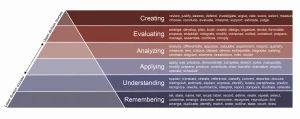Writing a Course Description
Academics
- Home >
- Academics >
- Office of the Registrar >
- Faculty/Staff Tools & Info >
- Writing a Course Description
Writing a Course Description
WHAT IS A COURSE DESCRIPTION?
A course description serves to state the rationale for the course and give an overview of key content covered, skills and knowledge to be learned, and how it will benefit the student. It may include learning strategies and major activities, if it would be a significant factor in a student deciding whether to take the course or not. Course descriptions should be clear, concise, and written for a student audience, but are also accessed by parents, other universities for transfer credit evaluation, employers, and accrediting bodies.
COURSE DESCRIPTION GUIDELINES
A course description:
- should be no longer than 125 words
- should begin most sentences with a verb
- should be student-centered and explain how the reader would benefit from the course
- should be written in the present tense and active voice
- should not begin with “This course…”
- should not contain deliverables like “student will learn…” but instead use “students will have an opportunity to learn…”
- should not include the names of software, technology, or texts that change term to term.
- course descriptions should be able to carry over for multiple terms and not need frequent updating.
- should avoid the words “we” or “you.” Course descriptions are not a direct communication to students as they are used by many audiences. “We” may be used in a course description if referring to society as a whole.
- should not incorporate prerequisites/prerequisites, intended delivery mode, equivalencies, fees, etc., but may contain if it is repeatable and how many times.
- should not include general education attributes as those will be entered elsewhere, as additional course details.
REFERENCE MATERIAL
Bloom’s Revised Taxonomy (2001) uses verbs and gerunds in categories that describe the cognitive processes by which learners encounter and work with knowledge (P.Armstrong, Bloom’s Taxonomy).
The taxonomy can be used to choose verbs that best align with the level of the course (Office of Teaching and Learning UVU, Writing Learning Outcomes and Course Descriptions).
EXAMPLE COURSE DESCRIPTION
BEFORE: This course introduces the computer as a fine arts tool, and provides an overview of digital arts concepts and terminology. Students will solve design problems using a variety of computer software applications. Critical awareness of new media in a historical context is encouraged through lectures, discussion and critiques. Offered fall and spring semesters.
AFTER: Introduces the computer as a fine arts tool, and provides an overview of digital arts concepts and terminology. Engages in critical awareness of new media in a historical context through lectures, discussion and critiques. Students will have an opportunity to solve design problems using a variety of computer software applications.
